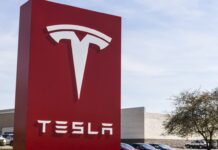
A new ‘power play’ is available through an exchange-traded fund (ETF) investing deep in the critical minerals of the renewable energy revolution.
The Element EV, Solar & Battery Materials (Lithium, Nickel, Copper, Cobalt) Futures Strategy ETF (CHRG) launched on the New York Stock Exchange Arca on Thursday, December 29. The ETF will invest in key commodities needed to make electric vehicles (EVs), battery energy storage systems (BESS), and other parts of the renewable energy infrastructure.
The fund aims to deliver returns for investors through futures contracts and equity securities that are “economically linked to elements necessary for the production of batteries.” These mainly include lithium, nickel, copper, cobalt, and potentially manganese and graphite, per the ETF’s prospectus.
CHRG is the maiden offering of Element Funds, which is new to the ETF space but boasts more than seven decades of combined experience investing in the natural resources sector.
It is an actively managed fund headed by CEO William McDonough, who previously handled $17 billion worth of private capital for Goldman Sachs’ partners. Joining as portfolio managers are John Raymond and John Calvert, principals at The Energy & Minerals Group (EMG), a private equity firm focused on resources.
“Over the past several years, we’ve seen enormous investor demand in strategies linked to the EV and renewables revolution,” said McDonough in a press release about the launch.
“However, critical metals are not an investment that you can set and forget. We will utilize our global experience to continuously monitor and re-evaluate CHRG’s portfolio allocations and weighting based on real-time industry developments.”
The value proposition here is that the management team can keep ahead of innovations and shifts in the industry. In this way, the fund’s portfolio may maintain precisely-targeted exposure to a well-defined set of minerals selected for their importance to the ever-evolving supply chain.
Lithium Rush
Demand for these critical minerals seems set to keep soaring over the years to come.
According to McKinsey, global demand for lithium batteries has been ballooning by around 32% since 2015 – a staggering growth rate the consulting firm expects will continue until 2030. The lithium battery value chain itself could potentially increase tenfold throughout the 2020s to reach annual revenue worth over $400 billion.
Through 2030, automakers are estimated to spend $1.2 trillion on producing electric vehicles alone, including all the costs involved in manufacturing the batteries.
This is triggering a new worldwide ‘lithium rush.‘ Mining projects have expanded significantly in several countries, including Australia, Chile, and Argentina, which are some of the largest producers of lithium. China, meanwhile, has become a major player in the refining of lithium into battery-grade material and is also the largest producer of batteries.
Besides CHRG, there are several other ETFs focused on EV battery materials, including Invesco Electric Vehicle Metals Commodity Strategy No K-1 ETF (EVMT), Harbor Energy Transition Strategy ETF (RENW), and KraneShares Electrification Metals Strategy ETF (KMET).
CHRG plans to pay out dividends on at least an annual basis. The fund has an expense ratio of 0.95% and is currently trading around $25 on the NYSE Arca.
This article was produced and syndicated by Wealth of Geeks.
Sponsored: Tips for Investing
A financial advisor can help you understand the advantages and disadvantages of investment properties. Finding a qualified financial advisor doesn’t have to be hard. SmartAsset’s free tool matches you with up to three financial advisors who serve your area, and you can interview your advisor matches at no cost to decide which one is right for you. If you’re ready to find an advisor who can help you achieve your financial goals, get started now.
Investing in real estate can diversify your portfolio. But expanding your horizons may add additional costs. If you’re an investor looking to minimize expenses, consider checking out online brokerages. They often offer low investment fees, helping you maximize your profit.






